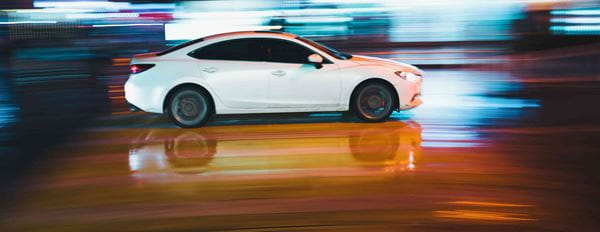
Driving in the Rain: A Fundamental Guide
Driving in the rain is an experience that involves multiple risks. In addition, it is a changing situation whose consequences affect driving differently. In this sense, the dangers that take place, once the first drops of rain begin to fall, are different from those that characterize driving in a downpour.
Lack of visibility, loss of vehicle grip and even less safety at the wheel by drivers increases the chances of an accident. Furthermore, in city driving cases, pedestrian behaviour is also often altered, which is aggravated by the fact that visibility is considerably reduced.
Be that as it may, in this article, I am going to provide you with a series of practical tips to improve your driving experience in the rain and, of course, minimize the chances that you will have an accident at the wheel in these circumstances.
Increased caution behind the wheel
By the time the first drops of water begin to fall, the asphalt tends to push dirt onto the road surface, including dirt and oil residue. The combination is extremely dangerous and can lead to the vehicle skidding at the least expected time.
On the other hand, once the rain has already fallen steadily and in abundance, there is a good chance that rafts of water will form in certain areas of the road. These are very dangerous situations, especially when driving at high speed.
This phenomenon, known as aquaplaning, involves a substantial or total loss of traction and direction of the vehicle. In addition, due to its characteristics it is difficult to perceive it early enough.
How to react in case of aquaplaning?
*Instead of stepping on the brake pedal, it is best to hold the steering wheel firmly and release the accelerator pedal to allow the vehicle to slow down. In this way, the wheels can come into contact with the asphalt again, at which time you can change direction.
Of course, the best advice to avoid being compromised in an aquaplaning situation is to use the following advice.*
Speed reduction
Regardless of the speed limits established by the regulations for each road, the presence of rain is an adverse factor that makes driving difficult. That is why it is most appropriate to reduce the speed of the vehicle to adapt it to the conditions that are taking place at that time.
Increase the safety distance
The safety distance is probably the factor that can contribute the most to reducing the probability of having an accident in rainy conditions. This is due to two reasons:
- 1.Τhe available braking distance is increased, which is essential given that the tires do not have the same grip on dry asphalt as on wet asphalt
- 2.Τhe spray effect caused by the circulation of the vehicles that precede you is minimized. This phenomenon makes circulation extremely difficult, since it limits the field of vision when lifting a large amount of water
Use the brake gently
Thanks to the intelligent ABS braking system, the chances of locking the wheels when braking are much lower than they were years ago. However, the reaction of the tires in the rain is always poorer.
For this reason, it is recommended to always use the brake as gently as possible.
In that sense, the advice to increase the safety distance makes even more sense, since that will save you from having to perform emergency braking or apply the brake too hard.
Exercise extreme caution with road marking
The colloquially known as "white lines" of the road are painted with a very resistant paint but that, unfortunately, becomes very slippery with the presence of water.
Although great progress has been made in this regard, these horizontal signs remain a danger, which is why you should avoid tires passing over them, especially if you are riding a motorcycle in the rain or approaching a zebra crossing.
Check the brakes whenever you go through a flooded area or with plenty of puddles
Water can cool the brakes, which greatly limits their effectiveness. That is why, after passing through an area with many puddles or even through an area that has been flooded, it is best to immediately check the state of the brakes. It will be enough to make a smooth step of the pedal.
This should be enough to notice that the car has lost braking capacity or not. If so, be sure to warm up the brakes as quickly as possible until you feel the mechanics are working again under optimal conditions.





